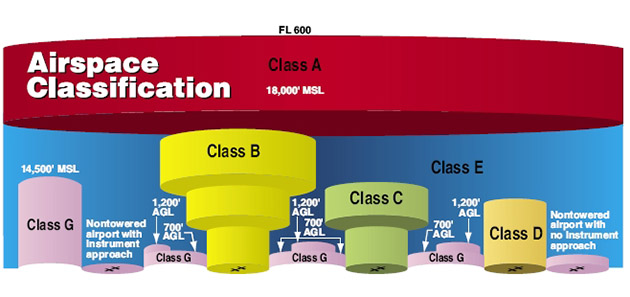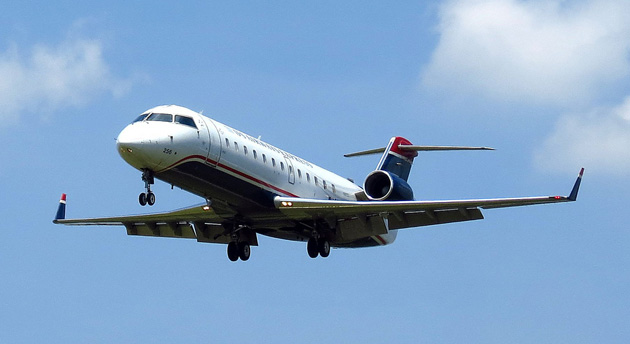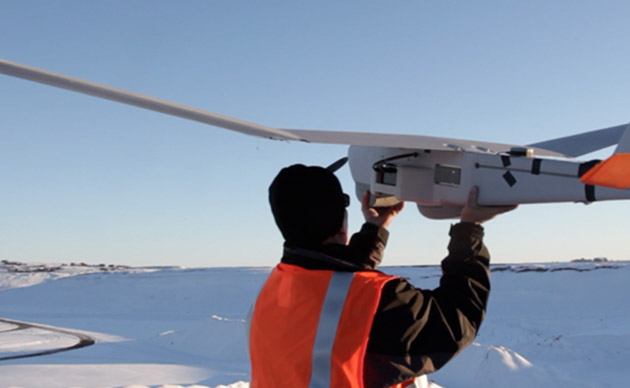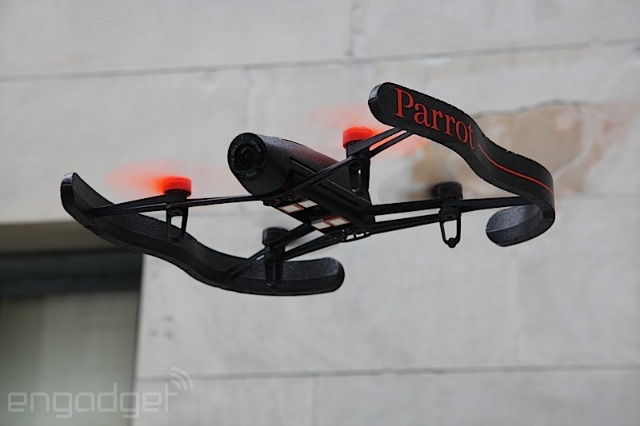Wondering why you don’t see drones everywhere, despite the intention of Amazon andothers to deliver all the things with flying robots? Here’s why: It’s illegal. The United States Federal Aviation Administration (FAA) doesn’t permit filming, crop-spraying, spying, tour-guiding, pizza delivery or any other commercial drone applications (you can, however, fly one privately). “But that’s unjust!” you may rail. “Why should the government stop businesses from plying their trades?” The FAA is charged with keeping the skies safe, and drone operators could pose a danger to commercial aircraft or spy on you illegally. On the other hand, US businesses want the FAA to approve drone use stat, so they can stop operating quasi-illegally and start making money. So, who’s right? Who’s wrong? Here are the ABCs of commercial drone flight in the US.
First, a little terminology. The industry would prefer Unmanned Aerial Vehicle (UAV), or any moniker except “drone,” but we’ll use the terms interchangeably. UAVs/drones are defined as any aircraft without a pilot aboard, but they can be broken down broadly into two categories: rotary drones — like the swarming KMel quadrotors or Amazon’s octacopter — and fixed-wing drones like the Puma. (We’re focusing on commercial models, notPredator-style military drones.) Like their civilian helicopter and airplane counterparts, each has its own strengths and weaknesses.
Rotary drones get the glory. For one, they make perfect camera platforms for stunning aerial shots, since they can hover and maneuver in any direction. While you may be familiar with the smartphone-guided Parrot AR Drone 2, other models — like the DJIPhantom series — are more common for commercial purposes. Starting at $679, the latter can pack a GoPro Hero 3 or its own camera, but if you want to carry a mirrorless, DSLR or cinema camera, you’ll need one of DJI’s expert cameras or models like the BeetleCopter orInfinite Jib — and a lot more money. Rotary copters also do real estate flyovers, journalism,herding, agriculture, deliveries and spying, to name just a few. The main drawbacks to copter drones are slower speeds and shorter range than fixed-wing models; even with battery extenders, most can’t run more than a half-hour.
As for fixed-wing UAVs, the FAA just approved the first commercial use over land of theAeroVironment Puma, a four-and-a-half-foot, hand-launched fixed-wing drone and theInsitu ScanEagle (pictured above). The main advantage of such craft is that they can fly for four to five hours at decent speeds, making them useful for surveys, maintenance operations, long-range sensing and even aerial photography. As for downsides? Fixed-wing drones often require a runway or catapult, aren’t very maneuverable and they can’t hover — so forget about a dronie.
WHAT’S AT STAKE AND WHY SHOULD I CARE?

The UAV industry is already pretty large despite the handicap of being arguably illegal. Once drones became powerful enough to hoist cameras, a cottage industry sprang up with services at a fraction the price of manned aerial photography. As a result, the Motion Picture Association of America has requested exemptions to the current drone ban, citing “tangible economic benefits.” Media organizations have also demanded clarity after a journalist nearly lost his job filming a fatal car accident by drone. Another industry looking for a break is search and rescue, which has seen the FAA clamp down on drone operations. Simply put: The drone industry is already booming and could be worth multi-billions of dollars in the coming decade.
There are other tangible benefits to Joe Public besides prettier movies. A search-and-rescue drone could help find a missing loved one in a difficult-to-search area. They could also make it cheaper and faster to map your property, protect you from bad guys or spray your crops. The industry would also create jobs for drone pilots doing something less stressfulthan targeting terrorists.

On the other hand, if the FAA isn’t careful with the rules, drones could negatively impact your safety. For starters, it’s easy to imagine a package-laden Amazon copter dropping out of the sky and injuring or killing a bystander. The tightly controlled airspace system around airports is also vulnerable right down to ground level (drones are banned at any elevation in those areas). As illustrated by the “Miracle on the Hudson” aircraft, something as innocent as a bird can bring down a large aircraft. Officials fear that drones could easily be sucked into a jet engine and cause catastrophic failures. Despite the potential economic benefits of drones, a single accident would create a storm of negative publicity, particularly if it involved fatalities.
WHAT’S THE ARGUMENT?

Once the FAA does create new laws, the drone industry could really take off. It’s estimated that 7,500 UAVs could enter the system if they become legal. But the FAA’s sole mandate is keeping air travel safe for pilots and passengers, a duty it performs admirably. Given the complexity of the current airspace system, throwing tens of thousands of drones into the mix could create chaos. There have already been high-profile near misses between drones and commercial aircraft, including one incident that had the pilot actually bracing for a collision. In Vancouver, a drone fell while filming a movie scene (injuring nobody, luckily), which caused the city to temporarily ban the practice. That’s why FAA drone head Jim Williams has told the industry that he’s aware of the pressing need for clear rules, but the process “must take place incrementally and with the interest of safety first.”
https://www.youtube.com/watch?v=jxh61VMeoQk
Still, companies have chided the FAA for failing to meet its own regulation deadlines. Right now, many operate in limbo, aware they could be shut down at any time. One operator was fined $10,000 by the FAA for illegal filming, though the decision was later overturned. Another who received a warning told the FAA it could “piss off.” Adding to the anger, the FAA said that it would announce new rules this November, several years later than promised — and those rules could take several more years to implement.

The good news is that the US regulator has at last approved some UAV flights over land and water. Once oil company BP proved that flights of the Puma AE were safe, the FAA approved it for road and infrastructure inspection. In addition, the FAA now has a test siteat a private Nevada airport to scrutinize all aspects of drone flights, with five more sites coming online soon. It could also start granting exemptions to filming companies, thanks to a request by the Motion Picture Association of America. Near-term approval of drone use in low-risk industries like agricultural, power line, pipeline and oil and gas inspection is also likely. By assessing UAV use on a case-by-case basis, the FAA could hold off industry clamoring until final rules are implemented.
WANT TO KNOW MORE?

If you’ve decided to go into the drone business despite the shaky legal ground, a good place to start is the Association for Unmanned Vehicle Systems International (AUVSI). Once you’re ready to pick out a drone, there’s a fairly extensive list on prosumer hobbyist siteDrone Flyers. You can also get in touch with the two most popular companies selling drones in kits or ready-to-fly models (DJI and Parrot). The WSJ has an informative articleabout drone safety; CNN detailed how they could be used in industry; and Motherboardrecounted the rescue industry’s fight against the FAA. For its part, the FAA itself has published a myth-busting article about drones, discussed industry petitions for drone-ban exemptions and detailed progress on its UAV test sites. Finally, we’ve published quite a few drone articles ourselves.
source: engadget
Discover more from TechBooky
Subscribe to get the latest posts sent to your email.














